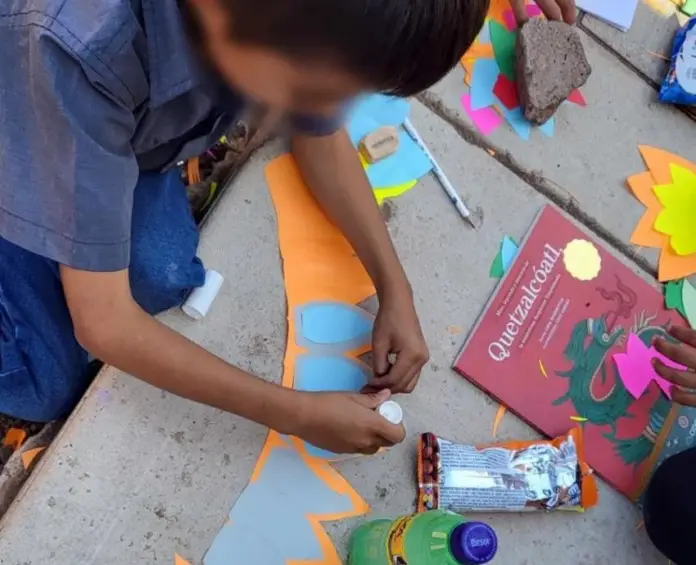Violence is legitimized in indigenous communities: nearly 90 percent of their families discipline children by means of punishment, such as beatings, prohibiting them from going out, giving them food, or locking them in a room; in addition to the violence to which they are exposed in their communities, on their journeys, and in temporary destinations.
This is the result of the research “The role of violence in raising indigenous migrant children,” which has been carried out since last year by teacher Verónica Macías Espinoza, a researcher at the Centro Universitario del Sur (CUSur) of the UdeG.
This study aims to determine the patterns in practices and beliefs that exist around child-rearing; to identify the types and forms of violence that occur, and to recognize the perception that children have regarding violence and their upbringing.
“Analyze the role that violence plays in the process of raising children and not only violence in the family nucleus, but the structural violence that we experience; “violence in the communities of origin and the violence that is also found in the communities of destination where these children arrive,” said Macías Espinoza.
For this research, the academic has carried out field work in Ciudad Guzmán with migrants from Guerrero, Oaxaca, Chiapas, Michoacán, Veracruz, Puebla and Morelia.
“It is a structural problem. Girls, boys and adolescents are a population that lives in conditions of significant vulnerability. Being a girl, boy and adolescent is already a factor of vulnerability, they are migrants, they are indigenous and the condition of poverty in which they find themselves both in their places of origin and in their places of destination are factors that keep them in these conditions and do not allow them to escape these cycles of violence,” she said.
In addition to this, their communities experience the violence of drug trafficking and their contexts are violent, which leads them to project future lives attached to these issues of violence.
“There is a case of a seven-year-old boy who said he wanted to be a guacho (soldier) when he grew up, because he wants to kill. We see that he is internalizing this violence from his environment and his identity is built from the conflict; a position, on one side, contrary to the violence of drug trafficking, because there is this awareness in children who identify that drug trafficking creates a problem, therefore, they want to be on the side that can confront or fight it, but finally they appropriate violence as a resource to achieve this,” he said.
He has found girls and boys who imagine futures far from this violence, even from violence in raising children. “They do not want to have children because it is difficult to take care of them and they do not want to hit them; they do not want to get married because their husband will hit them, will cheat on them; so, how violence transcends the present moment of the life of children is really important,” he said.
That is why the project is focused on girls, boys and adolescents, on recovering their voices, on reaching the community, being able to observe and record these practices or beliefs about parenting, and recover how they perceive this violence, how they live in this violence and how they project it based on their own perceptions.
“Families do not have the tools for a different upbringing; however, there are mothers who say that they are hit, but not as much as they were hit; that is, there is an awareness of how violence marks lives, there is an awareness that violence is not accepted and they recognize these actions with regret,” she said.
The research is still in field work in shelters, in schools, to later do a fine analysis and publish the results.
“The work I have been doing has been really satisfactory. It has been an important challenge to have access to the population, to be able to share with children; “To touch a little of their lives and know that being and sharing with them represents an important bond, with bridges that they can build in their future lives,” said Macías Espinoza.
“I hope that more people can be interested in working with this population from a horizontal approach, which allows support based on the needs that they themselves recognize in their populations, and not only based on what we, as researchers, can come to consider that they need,” he concluded.

Source: udg




